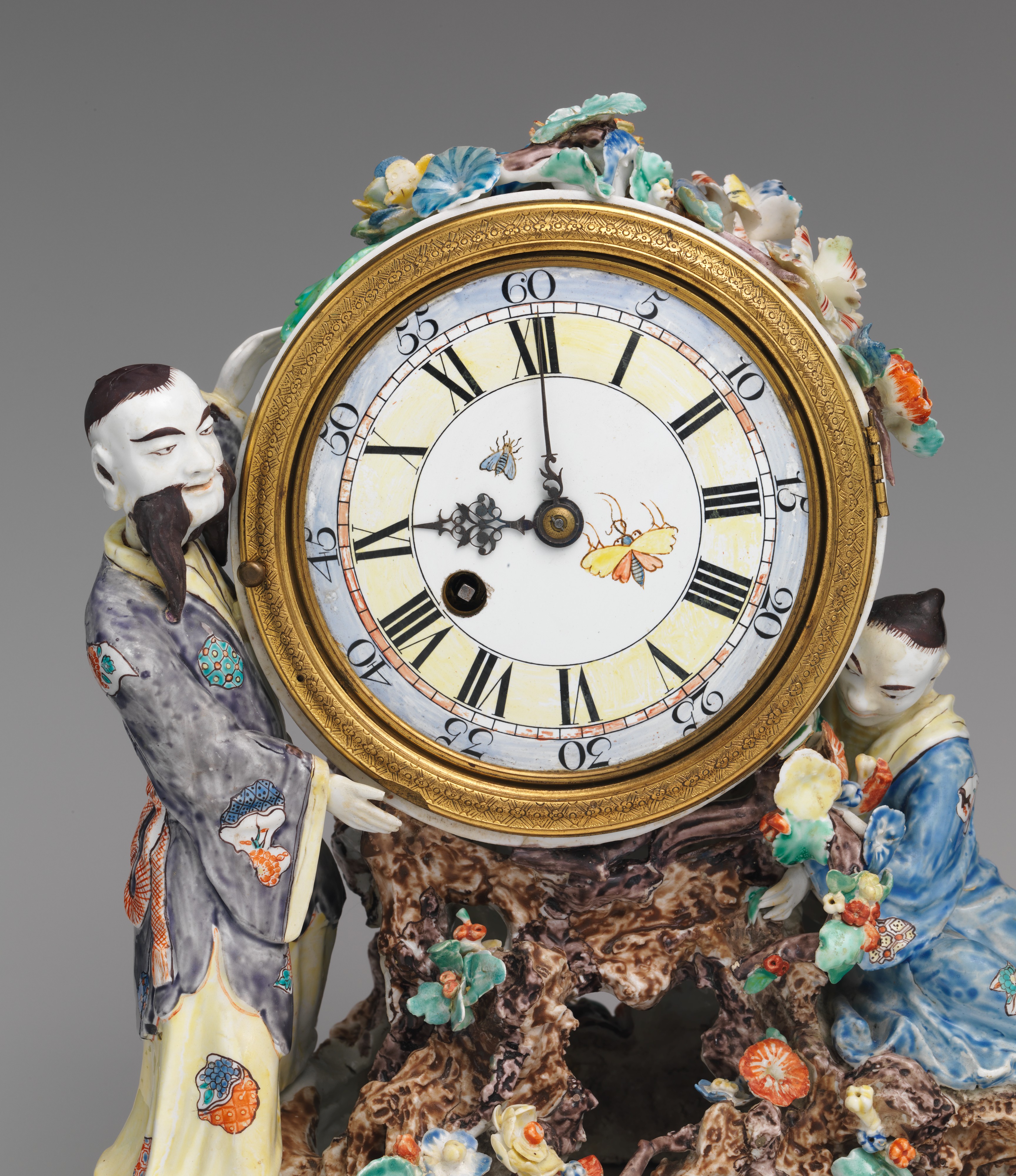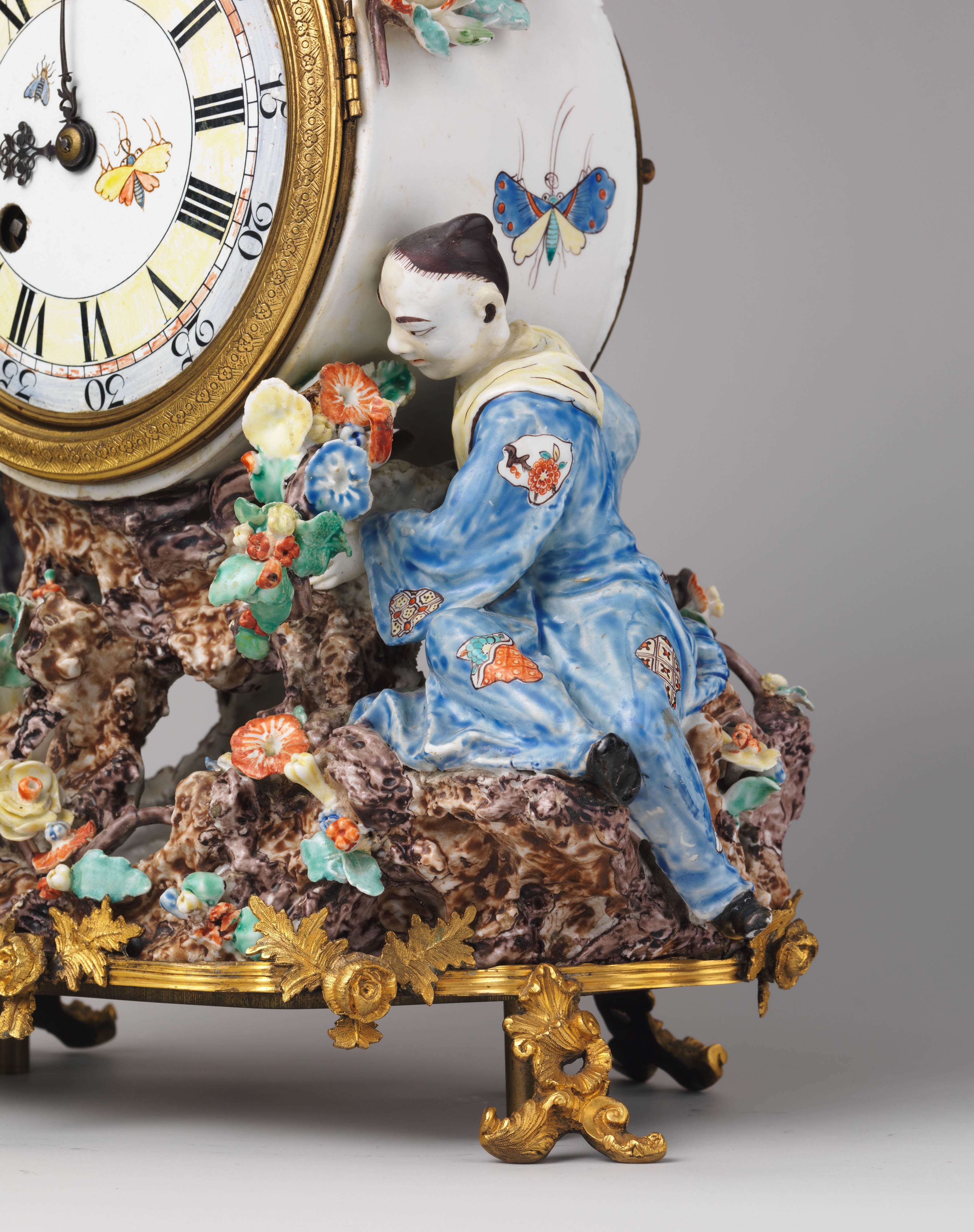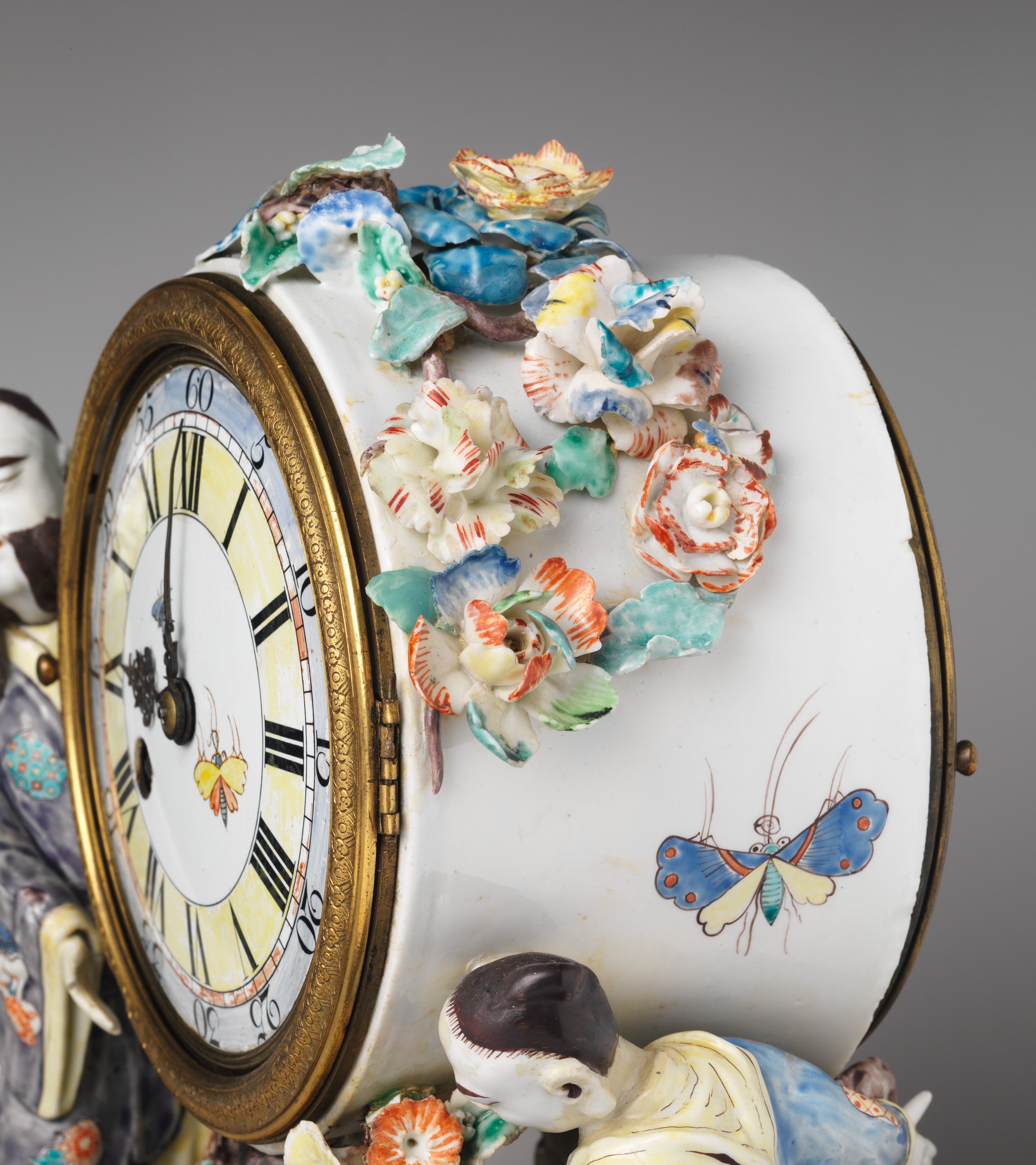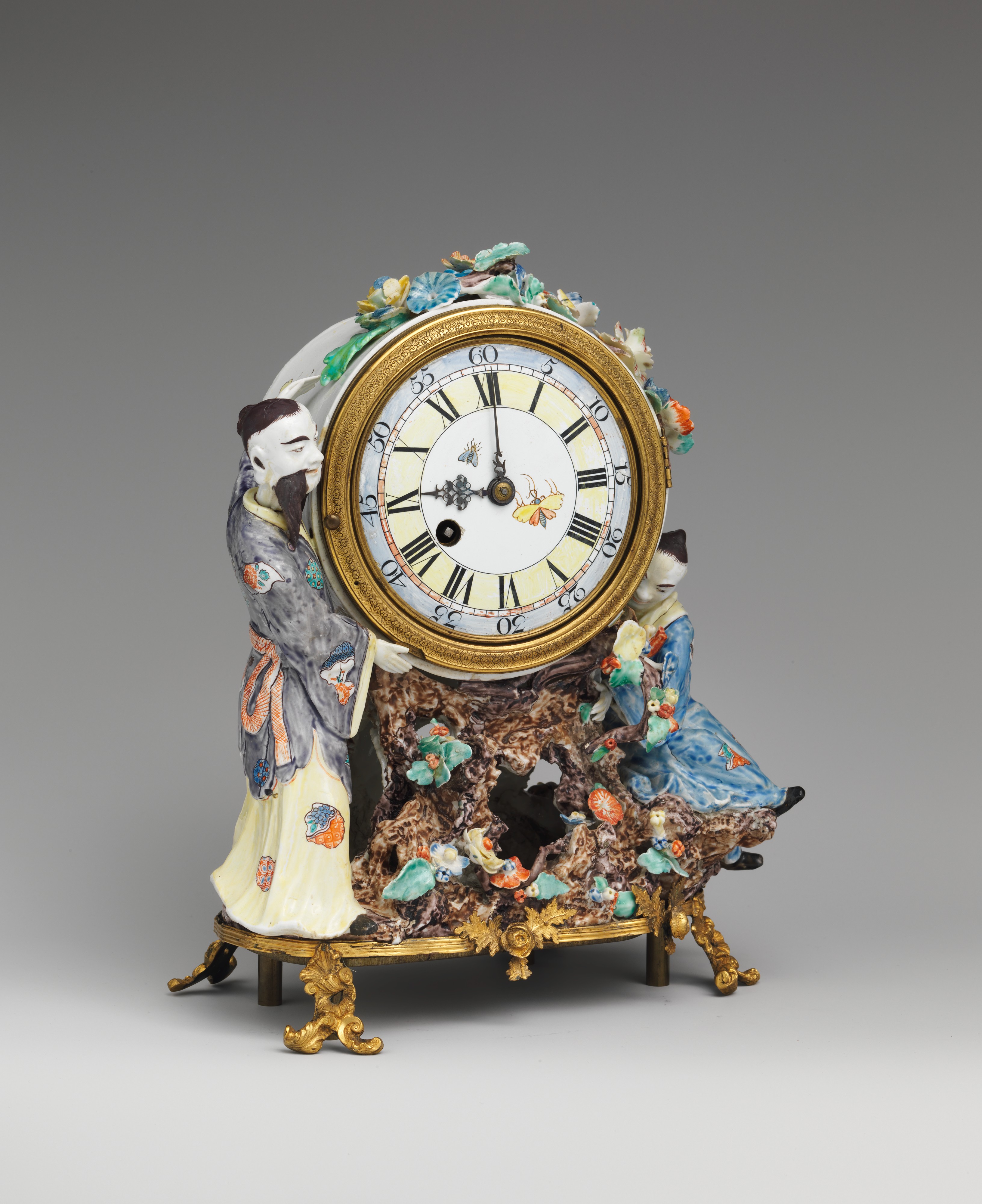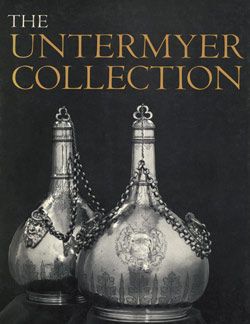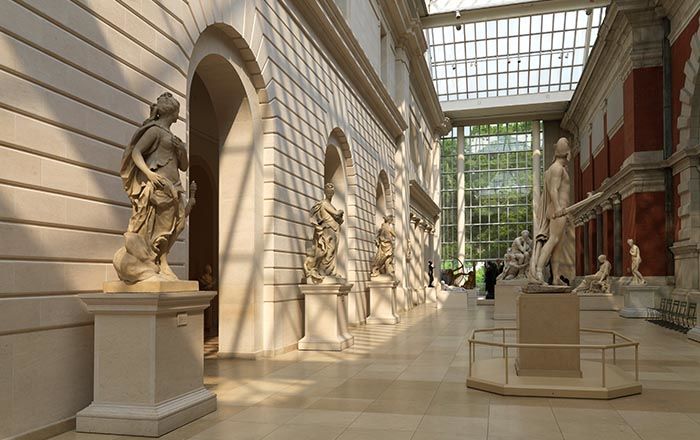Mantel clock (pendule de cheminée)
Movement by Benjamin Gray British
and Justin Vulliamy British
Case by Chantilly Porcelain Manufactory French
Not on view
French rococo clocks were often decorated with porcelain figures. Porcelain cases made specifically for clocks are less common, and they were prized in England as well as in France. There is evidence that this case originally contained another movement, probably by a French clockmaker, but the case is not much older than the present movement, and the movement may, indeed, have been made as a substitute for the original one. Gray was appointed clockmaker to George II (1683–1760) in 1742. The following year he went into partnership with his future son-in-law, Justin Vulliamy, and together they produced a number of clocks for their first royal patron and, later, for his successor.
[Clare Vincent, 2007]
This image cannot be enlarged, viewed at full screen, or downloaded.
This artwork is meant to be viewed from right to left. Scroll left to view more.


